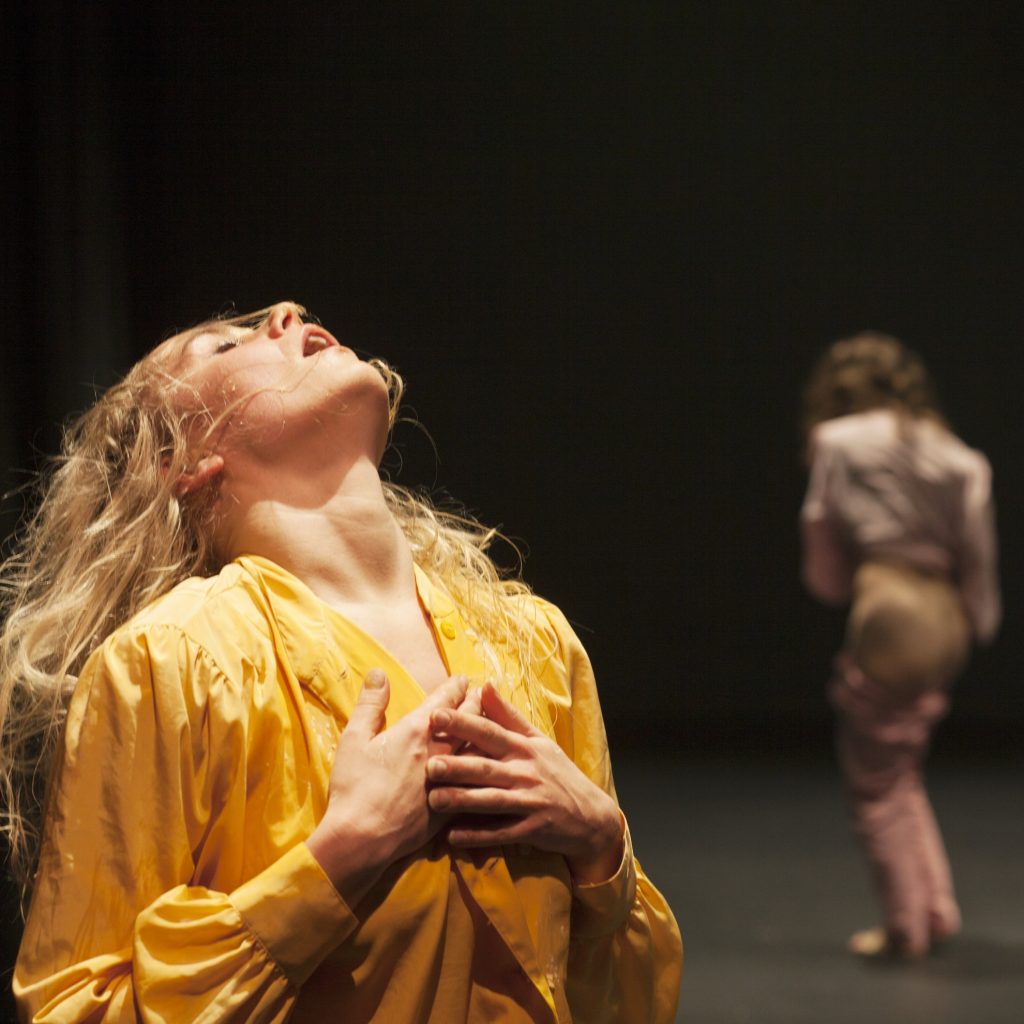
- News
Interview with Elina Pirinen
Choreographer of Personal Symphonic Moment
Can you introduce yourself?
I am Elina. I have a Russian blue cat Irinja which I adore the most. I have two fantastic big sisters.
My great friend is Heidi, who has written the texts of Personal Symphonic Moment.
I am afraid of The Eiffel tower and I have been listening London Grammar a lot lately.
What is your opinion on the social relevance of theatre?
Theatre doesn’t have to be for everyone. I believe it is enough if some people are deeply enough attached and moved because when they spread out their affection, it will make a myceliumical difference in a longer run.
What drives you to be creative?
At these times my driving force and contribution as an artist is to make sure that the human picture in my works is not supporting superficiality, emotional coldness and distance, ignorance and emptiness even if they flirts with those registers. And I also love working with warm, intellectual, humorous and openly emotional people. We can make a difference by showing our brokenness and recoveries because humans can relate to that secretly or openly.
What role did theatre/dance have for you when you grew up?
Theatre, literature, music, visual arts and dance gave me true long lasting heart friends and also mirrored vast and beautiful ways the union between reality and fantasias surrounding. Art and the people around it gave consolation and power and challenged me intellectually and emotionally. It was the best ground to grow up with and still is.
If you hadn’t become an artist, what would have been your profession?
I would have become a contemporary psychoanalyst or an animal nurse for cats, rabbits, squirrels, head hogs, mice, dogs and horses.
What is your own relationship with the work of Dimitri Shostakovich (specifically the 7th symphony)?
I wanted to deal with a vast structure as a dramaturgical clear guideline and a frame. I needed to have ”a companion” who I could work with and against in order to develop my practice. It felt natural to choose a classical music piece and have a wild process inside of that clear frame because I have studied classical music for a long time.
You incorporate different aspects in your performance, including beauty, eroticism, sensuality, danger, sentimentality, the intellectual and the primitive. How did this develop?
7th symphony in its 4 parts suited perfectly for my intentions. I started to think of a symphony which has the most pompousian, fierce and sentimental musical landscape but is madly and witty composed. Generally I had been feeling the importance to show primitivism and affection, mental and sentimental corporeality, warmth and meanings instead of reason, control, coldness and emptiness in art.
To what extent do you feel this performance address issues in our society?
Shostakovich has been a composer who I have loved since child because of his expressionistic and even rebellious style. The 7th symphony has a lot to deal with as an stage artist. It’s political tragedy around and in it and at the same time it’s musical parameters are hard core to work with, so this all was the perfect challenge for me as a maker. It was important information that Shostakovich himself didn’t want this composition to be seen as a war symphony. I started to treat it as an apotheosis to certain kind of aesthetics of humanity which were kind of absent at that time from dance art.
How do the dance elements relate to the music in the piece?
Then we had to create our own relationship towards what we got to know about the background information of the musical work. For us the politics was to create a piece about what has been going on in our lives, what haunted and besieged us in our times in a personal and generational level as friends, lovers, women. Through all this we created the corporal, textual and visual material. Personal in this means inner phantoms which invites us to follow and then we let go. This inviting and letting go is the core of the movement language in the piece. The texts are created from the idea ”what could be your symphonic moment” and we gave language to those moments through small stories as frames.
You have taken the musical structure as your dramaturgical structure. How did you tackle this conversion of music into image, movement and text?
So Shostakovich’s symphony, like he wanted it to be seen, and our Personal Symphonic Moment, like we want it to be seen, are two pieces about universal humanity through peculiarly horrific and beautiful experiences which are drawn out in the body and text in a personal and social level. Our piece shows human and her corporeality and thinking as lovable looser and celebrates that and we hope that this truthful looserness communicates by giving comfort and consolation.